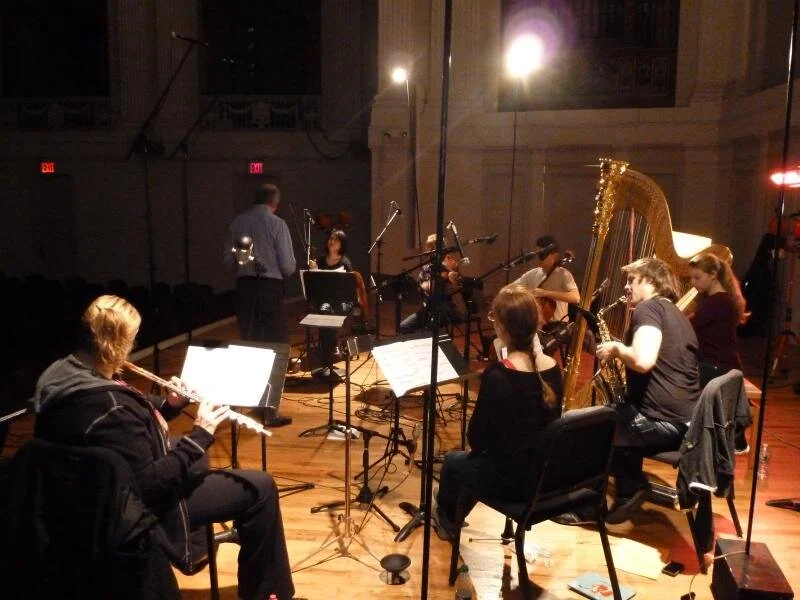Instrumentation: flute/piccolo, clarinet/bass clarinet, alto saxophone, harp (retuned), violin, viola, cello
First Performance: The Conservatoire National Supérieur de Musique et de Danse de Paris, 24 October, 2008
Duration: 12 minutes
Each of the three sections of Centripedalocity deals in some way with musical gravities at work. Various "forces" pull, push, spin, rotate, attract, and deflect musical materials to and away from each other. The analogy extends to different levels of harmonic and rhythmic attraction. In the first part, Faux d'artifice, opening chords pull a dominant saxophone line into one another like miniature whirlpools. An extended allusion to Debussy's piano prelude Feu d'artifice appears redrawn by a microtonal harmonic world.
Escape-Cadence Free-Fall (3rd unRaveling), takes an altered version of the opening chord progression of Ravel’s Introduction and Allegro and runs with it in many directions, turning it into a harmonic omnibus. New colors shine through microtonal intervals. "Escape-cadence" alludes to “escape tones” in common practice harmony; here the tones are like cadences that push away and are pulled back, only to escape. The intervals are treated as overtones, and the progression is constantly in "free-fall,” with harmonic snapshots taken by other instruments.
Anadiplosis is based on Thelonious Monk's "Epistrophy." The Monk tune accents repeated phrase endings, which fall into place on different parts of the beat, as a musical equivalent of an epistrophe, a rhetorical figure of repetition. Anadiplosis is a similar rhetorical device, repeating words that end previous lines or clauses at the beginning of new ones for extra emphasis. The constant repetition is created from a kind of call and-response polyphony.
Anthony Cheung
August 2008
“A riot of color was also the hallmark of “Centripedalocity”... Members of both ensembles [Talea Ensemble and Ensemble Linea] performed the work, which quotes Debussy, Ravel and Thelonious Monk in its three sections. They incorporated dense, vividly-hued passages, microtonal swooping phrases and an evocative saxophone melody that was gracefully echoed by the violin.””
